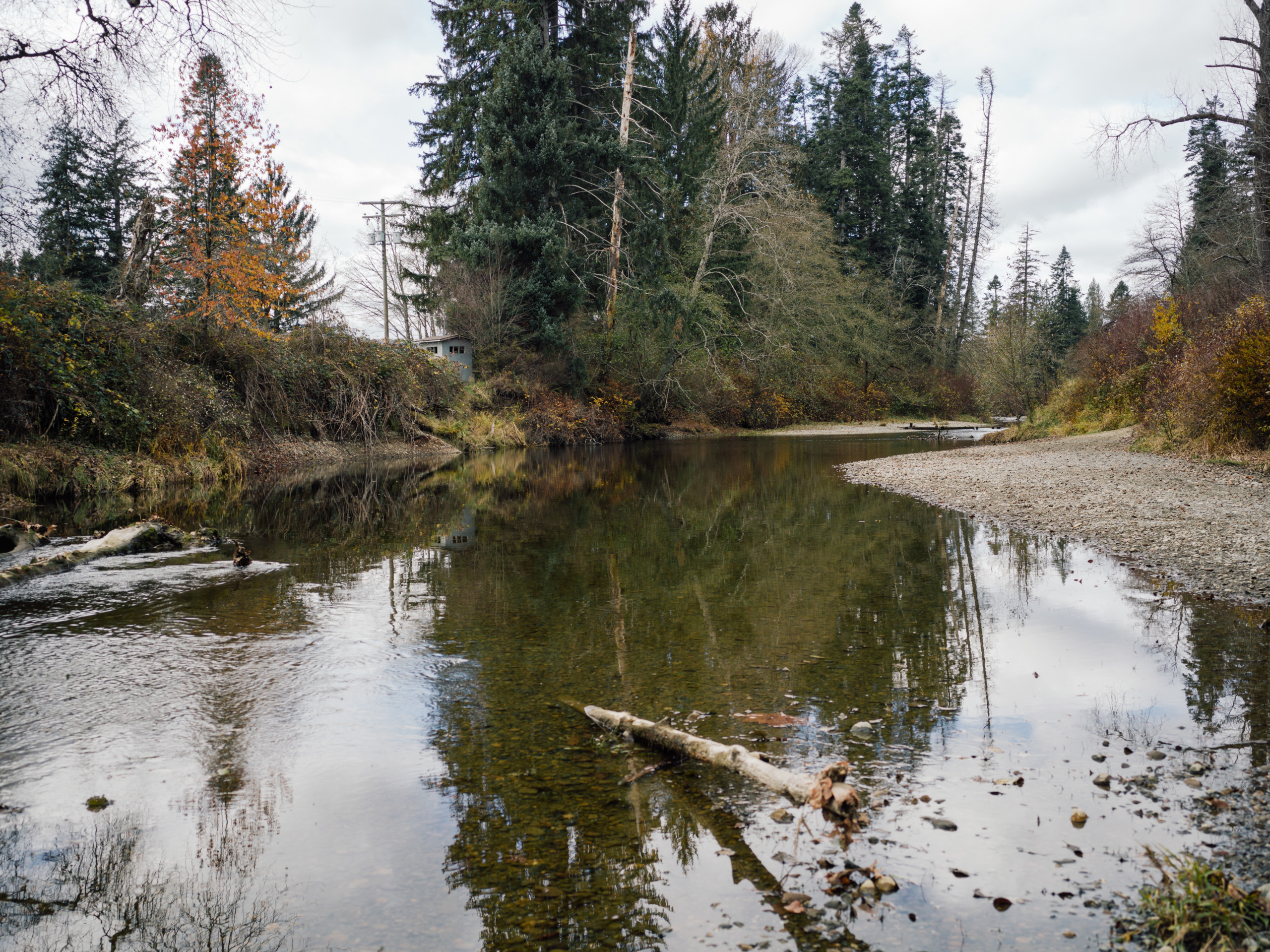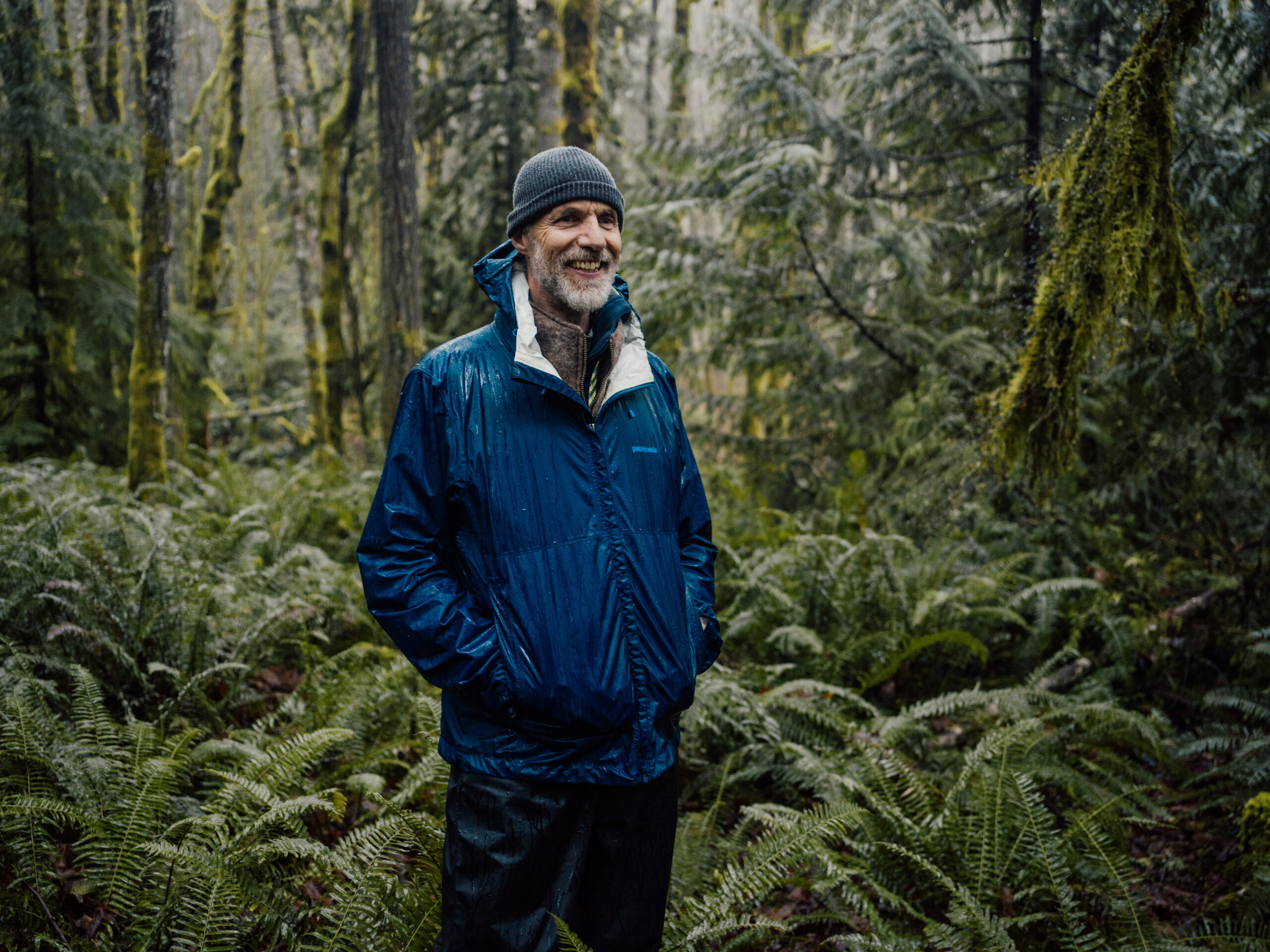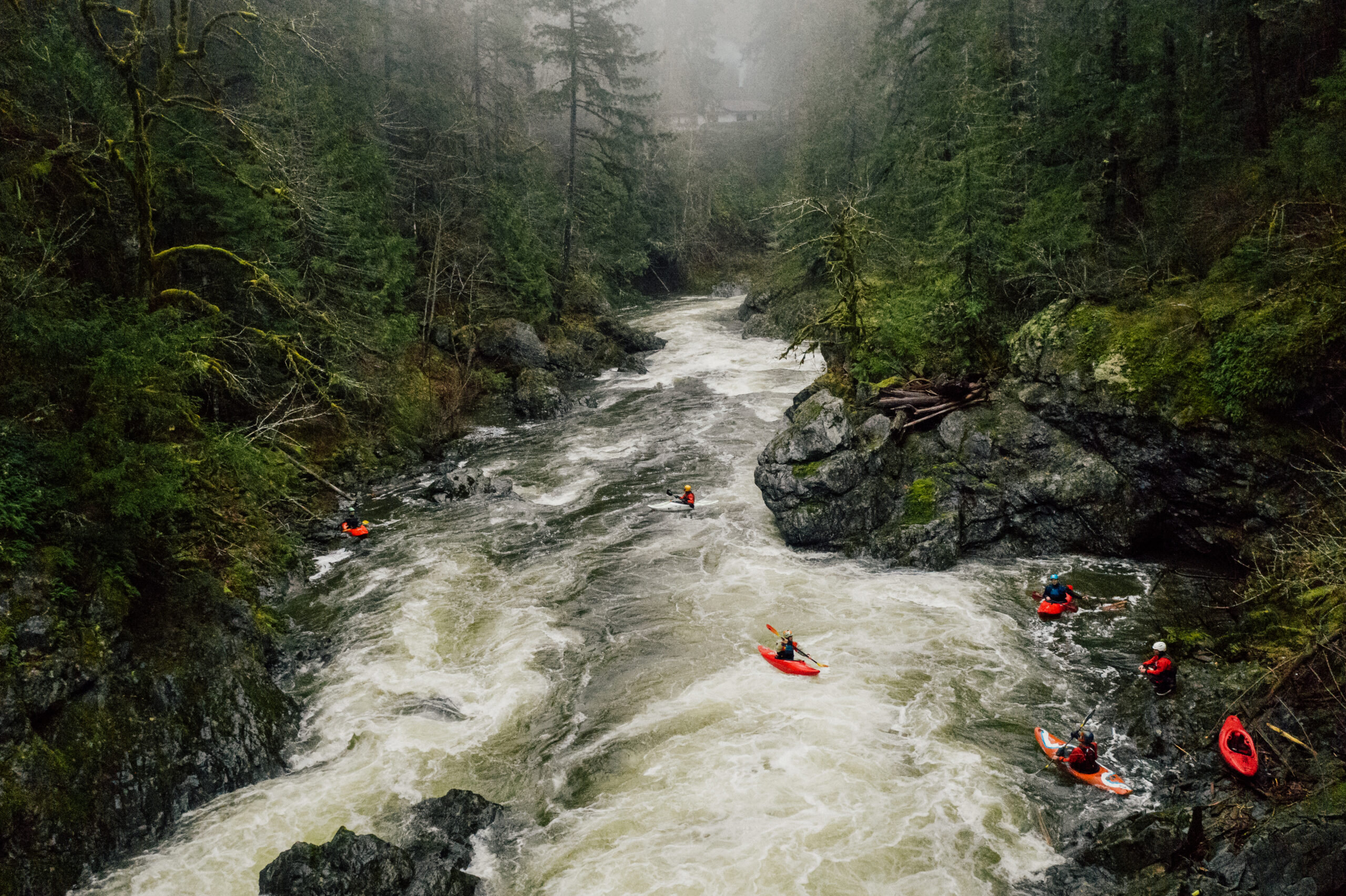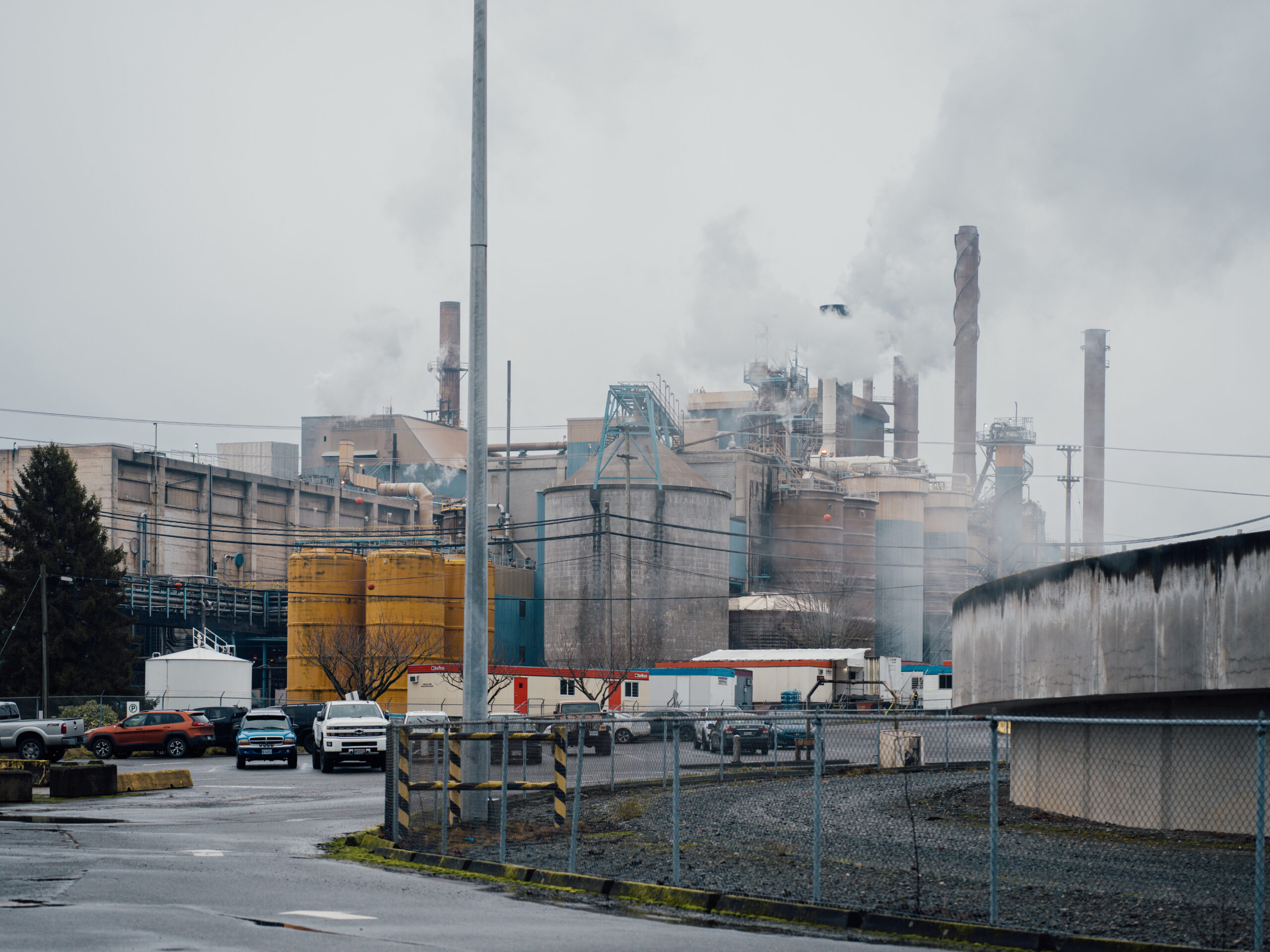
‘Afraid of the water’? Life in a city that dumps billions of litres of raw sewage into lakes and rivers
10 billion litres of sewage are dumped into Winnipeg’s lakes and rivers each year. Some...
This story is part of When in Drought, a series about threats to B.C.’s imperilled freshwater systems and the communities working to implement solutions.
Coho salmon were on track to have a good year in the Tsolum River, which merges with the Puntledge River near Courtenay, B.C., on the east coast of Vancouver Island.
Then came the heatwave and drought.
“The numbers were so good before the heat came. It was a particularly good year,” says biologist Caroline Heim, the program coordinator of the Tsolum River Restoration Society.
Between June 26 and 29, the community restoration group observed coho fry swarming in massive numbers at cool groundwater upwelling “refugia” sites where water temperatures were up to 15 C cooler than the general river temperature — which climbed as high as 29 C during that time. Within that period — during which the hottest temperature ever in Canada was recorded in Lytton, B.C. — the group also observed a significant coho die-off.
“It’s hard to quantify how many died. A conservative estimate would be at least half, but probably much more than that,” says Heim. “It’s pretty dire.”
The Tsolum River is part of the East Vancouver Island Basin, a region experiencing a severe drought caused by low spring precipitation and record-high temperatures.
On Friday, the province increased the drought severity on Vancouver Island to level five, the most intense drought rating possible. Under level five drought conditions, adverse impacts on socio-economic or ecosystem values are “almost guaranteed,” according to the B.C. drought information portal.

The province declared significant drought conditions across B.C. on July 9, noting that “adverse impacts on fish have been observed” due to elevated water temperatures, low flow conditions and reduced water availability. The public is being urged to conserve water.
Since the initial June to July heatwave shocked the Pacific Northwest, Heim says the Tsolum River Restoration Society has observed significantly fewer fish in the river, especially in its lower portions. Many of the remaining coho, which survived the heat wave, are suffering from diseases and fin rot as a result of heat stress, she adds.
Now that pink salmon are beginning to run in the Tsolum, Heim says the restoration group will monitor for signs of early fatalities, which may occur before the fish get a chance to spawn, as brutal regional heat and drought conditions persist.
Such tough conditions aren’t limited to the Tsolum, however.
On eastern Vancouver Island, watersheds of special concern in the ongoing drought include Sandhill Creek, Koksilah River, Chemainus River, Millstone River, Tsolum River, Black Creek as well as areas in the Gulf Islands.
While there are other regions in central and southern B.C. also in the grips of drought, watersheds on eastern Vancouver Island are particularly sensitive to prolonged dry conditions because the region’s salmon streams are relatively short and small, explains biologist Tanis Gower, science and policy advisor for Watershed Watch Salmon Society.
Low stream flows naturally occur in small rivers on eastern Vancouver Island during the summer months when precipitation is scarce, but increasing drought and extreme heat patterns are further reducing summer stream flows — often coinciding with migration and spawning cycles, key stages in life of salmon that are crucial for survival.
While some rivers may once have relied on glacial snowpack melt to keep water flowing in a typical summer, climate change is shrinking glaciers, creating smaller winter snowpacks that melt earlier and keep stream flows low.
Low stream flows and drier rivers can restrict salmon habitat availability, de-water critical riffle and side channel habitat, leave fish vulnerable to predators and prevent adult salmon from migrating to their spawning grounds.
Low stream flows can also heat up water temperature beyond the liveable range for salmon, further stressing the fish, Gower says.
Streams on eastern Vancouver Island have experienced increasing patterns of heat and drought conditions in recent summers.

Ron Ptolemy, river biologist and streams and flow specialist with the province’s Ministry of Environment, says droughts are starting earlier and lasting longer.
“We have streams that now go regularly dry, which is not a good theme for fish,” he says. “There is a direct negative impact on what number of fish can be produced.”
This year, Ptolemy observed “exceedingly low” stream flows in rivers on eastern Vancouver Island.
Coupled with extreme heat conditions, the impacts are tangible.
Ptolemy cites a massive fish die-off in the Quinsam River, which feeds the Campbell River, in part due to low flows and stream temperatures reaching as high as 29 C. At the Cowichan River, a larger stream that flows from Cowichan Lake to Cowichan Bay, Ptolemy says he observed many fish with poor bodily conditions.
Vancouver Island’s famed Cowichan Valley boasts having one of Canada’s only “maritime Mediterranean climatic zone.” The valley, which extends from Mill Bay, just north of Victoria, to Ladysmith, just south of Nanaimo, is also known for having the warmest year–round temperatures in the country.
The valley’s two main rivers, the Cowichan River and the Koksilah River, have already been hit hard by the impacts of climate change.
Climate projections for the Cowichan Valley predict hotter and longer summers and less summer rain. The analysis found the number of summer days above 25 C may more than double from the current average of 16 days per year to 39 days per year by the 2050s.
Residents say they’re already seeing the effects of hotter, dryer weather firsthand.
Debra Toporowski, a board member for the Cowichan Watershed Board and a councillor with Cowichan Tribes, says salmon populations in the watershed have drastically decreased in her lifetime.
But in conversations she’s had with Elders, she’s learned the changes to salmon populations are even more drastic than her personal observations.
“The Elders of our time have mentioned it was so full of salmon, you could walk on the backs of the fish to get to the other side of the river, basically. It was so packed. There was nothing but salmon,” she says.
Extreme heat and drought conditions, expected to become the new normal, are amplifying threats to salmon by drying and warming critical habitat.
“We’re not waiting for climate change. It’s already here,” says Tom Rutherford, Cowichan Valley resident and executive director of the Cowichan Watershed Board.

The headwaters of the Cowichan River are located in Lake Cowichan, and since 1951 a weir system has been used to ensure the river is fed a steady supply of water. But in recent years, lower water flows and less precipitation have meant more water users along the Cowichan are vying for a limited water supply. In late 2020 the federal government put $24.2 million into a seven-year program, led by Cowichan Tribes in partnership with the Cowichan Watershed Board, to help restore the Cowichan watershed.
As part of that restoration program, the aging weir will be replaced with a new structure, 70 centimetres higher than the current weir, allowing more water to be stored and released during the summer droughts.
But for the Koksilah River, finding solutions to low water flow is much more difficult. The Koksilah watershed’s water is stored in wetlands, a handful of small lakes and underground aquifers. Because the Koksilah isn’t fed by a single large body of water, the river relies on rain and snowmelt from the mountains.

And climate change projections for the Cowichan Valley suggest the region can anticipate more extreme weather events, especially more rain in the non-summer months, which can lead to flash floods that can wipe out spawning habitat for salmon. Overall, salmon are being impacted by weather events on both sides of the flood and drought extremes.
The Koksilah relies on the inflow of groundwater, the cooling water of which can be essential for salmon survival during the hottest months of the year. But the majority of water extracted from the Koksilah watershed is drawn from groundwater, which has come under significant strain from growing farms, forestry, recreational businesses and rural development. A 2018 study conducted by the Watershed Watch Salmon Society found that 70 per cent of water used in the Koksilah watershed is well water drawn from aquifers.
Now as the region’s water reserves are depleting, even deep wells are beginning to run dry. Tests show some aquifer levels have dropped by 30 metres, signaling deep trouble for salmon.
Two summers ago, B.C. issued an emergency fish population protection order for the Koksilah that required specific water users to cease all use for nearly two months to protect fish populations under threat.
At the time of that emergency order, almost exactly two years ago, the province stated that ministry biologists “determined that current flow levels are so low that habitat conditions are severely degraded and fish populations may be threatened.”
It was the first year that flows became so dangerously low in the Koksilah that volunteer efforts were not enough to prevent the province from stepping in to revoke licenced water holders’ right to use water.
Rutherford of the Cowichan Watershed Board says those restrictions cost the Cowichan community tens of thousands of dollars.
Since then, the community has come up with new solutions, Rutherford says. Both this and last summer, farmers have divided into two cohorts which alternate irrigation periods to halve agricultural water use and preserve crops.
“That’s the kind of innovative solution that we need,” Rutherford tells The Narwhal. “Our water flows aren’t falling as low this year as they did in 2019, even though it’s drier because we’ve come up with a strategy to address environmental concerns and still meet some [farming] production needs.”
Community members, stakeholders and government representatives are collaborating to develop watershed-specific solutions for the Cowichan/Koksilah watershed.
A local pulp and paper mill operates the licenced weir at Cowichan Lake and is working with the community to release more water during summer droughts.

And the Koksilah River is at the helm of the province’s first-ever water sustainability plan. Signed by the Cowichan Tribes and the province, the emerging plan could restore some of the Koksilah’s ecosystems and salmon integrity while setting an example of collaborative watershed security for the entire province.
The success of the river’s plan hinges on the willingness of community members and stakeholders with diverse water interests to work together, Rutherford says. Without this kind of action the salmon will continue suffering devastating declines as extreme climate events increase in frequency, he adds.
“We’re on a trajectory that’s going to make it really hard for some species of salmon to survive where they have for millennia.”
Both the Koksilah water sustainability plan and the river’s 2019 emergency water cut-off were made possible under B.C.’s fairly new Water Sustainability Act — legislation introduced in 2016 to replace the province’s century-old water rules.
The new water act aims to shift the priorities of the province’s water management scheme from centring economic interests to protecting water for current and future generations.
Water experts and advocates say the new legislation was much needed because 63 per cent of British Columbians live in water-stressed areas.
The legislation opens up new opportunities to address drought and water scarcity in the province from the watershed level. In practice, experts say that could mean ensuring enough water is available in the system and conserving water during the summer, with built-in flexibility to respond with water allocations during emergencies. The key, they say, is ensuring watershed management is adaptive with climate change, rather than reactionary to climate change events.
But experts say implementation has been slow, despite some progress on the Cowichan/Koksilah watershed.
“A first immediate priority for government is finishing the work of the Water Sustainability Act, which is now over five years old and only barely implemented,” wrote Oliver Brandes, co-director of the POLIS Project on Ecological Governance, in an op-ed from earlier this year.
“The Act urgently needs to be moved from ‘good ideas on paper’ to action to protect lakes, rivers, streams and aquifers across the province. This starts by finishing the long-promised groundwater licensing and water planning and flow protection that better balances water for nature, fish and communities.”
The province’s Ministry of Forests, Lands, Natural Resource Operations and Rural Development did not provide a response to The Narwhal before publication.
Experts and advocates alike say the Water Sustainability Act could protect wild salmon and watersheds, and are pushing the province to boost support and funding for more watershed-specific water sustainability plans to address water conflicts and to commit to licencing and regulating groundwater extraction, the deadline for which has already been delayed once.
Gower of Watershed Watch Salmon Society points to the collaboration and restoration planning underway in the Koksilah River as an example of a meaningful way forward.
“That is really how we’re going to address the conflicts between fish and humans that are being made so much worse right now by climate change,” she says.
The Narwhal’s When in Drought series is funded by the Real Estate Foundation of BC, which administers the Healthy Watersheds Initiative, and the BC Freshwater Legacy Initiative, a project of the MakeWay Foundation. As per The Narwhal’s editorial independence policy, no foundation or outside organization has editorial input into our stories.
Get the inside scoop on The Narwhal’s environment and climate reporting by signing up for our free newsletter. On a warm September evening nearly 15...
Continue reading
10 billion litres of sewage are dumped into Winnipeg’s lakes and rivers each year. Some...

Court sides with Xatśūll First Nation, temporarily halting Mount Polley mine waste expansion

Break out the champagne: Emma’s storied life and leadership in journalism has earned her the...
